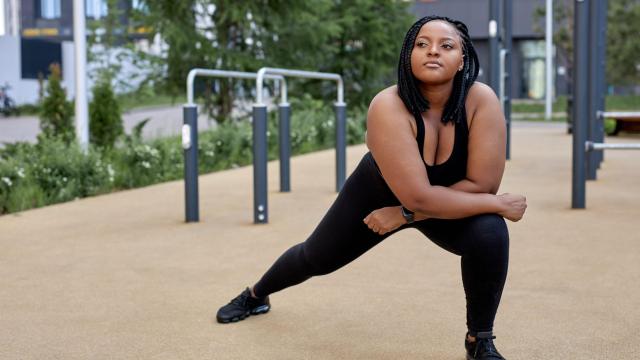Starting a running habit is hard in the beginning, but also really satisfying — especially when you hit a big goals like running your first 5K or setting a new personal record. For every new runner, though, there comes a time when you start asking “what next?”
When that happens, there are any number of running accomplishments to set your eyes on, and one of the best options is adding some speed work into your routine. There are plenty of benefits that come with incorporating speed training into your regular exercise, from increasing your cardiovascular fitness, to helping you run faster.
However, if you’re just starting out, speed work can be intimidating. “When you move into the realm of doing things at maximal intensity, the stresses that you put on your body are extreme,” said Anthony Wall, a running coach and director for the American Council on Exercise. “Understanding that concept is where we want to work from, when we look at the pre-conditioning, when we look at the mobility parts of exercise, when we are looking at the different drills.”
Start slow and be consistent
Since sprinting puts more stress on your body than jogging, that means a higher potential for injury. That’s why it’s so important to start slowly and to be conservative when it comes to ramping up your speed work. This means starting with a lower number of repetitions, shorter sprints, and at a more conservative pace than what you might be tempted to do. You need to strengthen and prepare your body to go at higher speeds.
“We want to give the body time to adjust,” Wall said. “What that means is to give the body the opportunity for the ligaments to strengthen and the connective tissues to adapt to the forces that you are going to be putting on them.”
As with so many other aspects of fitness, working your way up to sprinting takes time, effort, and most of all, consistency. “Runners should be patient with themselves and their bodies,” said Josh Honore, a personal trainer and master coach for Xponential+.
Focus on mobility and stability
“Part of what we do when we are getting people conditioned at the beginning of a sprint-based program is about increasing the mobility and stability of their bodies, so they can handle increased speed over time,” Wall said. This includes incorporating mobility drills so that your joints have the full range of motion they need to sprint properly, including ones like butt kicks, high knees, and high knee step overs. To get a sense of what drills to do, Wall recommends watching this video.
“These drills and exercises are two-fold,” Wall said. “One is to ensure your body can address the demand that is required of it, and the other part is to make the running more efficient. Sprinting is about being efficient, being able to move in a way that you don’t get tired as quickly.” If your form isn’t good, then you’ll end up needing to use more energy than you need and not being able to move as fast.
Know when it’s time to start speed training
If you’re at a point where you’re able to jog consistently for 20 to 30 minutes, it might be a good time to start adding sprints. Wall’s recommendation for new runners is to start with some mobility drills, after which you’ll do three repetitions of running 30 meters at 50% effort, with some recovery time in-between.
Then, once you’ve finished, you can go for your long, slow jog. Although this sounds like a modest goal, doing this several times a week for a number of weeks will help you slowly build up your body’s capacity for speed, at which point you can start to bump up the intensity.
“What you would see is that you feel better, you have more understanding of how your body operates, you may move more effectively and efficiently in certain ways, because you’ve been focusing on some of these drills,” Wall said. “The speed will come, but it will take a little longer.”
Once you start getting to 70% or 80% effort, Wall recommends decreasing the repetitions, at least until your body adjusts. Once you get to a point where your body is more accustomed to sprinting, you’ll feel a lot more comfortable incorporating workouts dedicated to speed.

Leave a Reply
You must be logged in to post a comment.